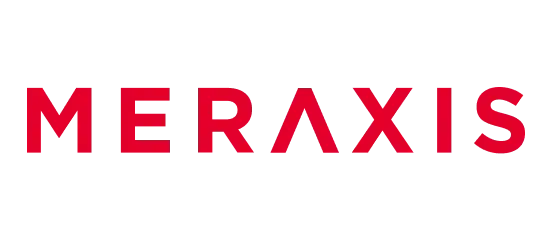Why You Need an Application Modernization Roadmap
Modernization these days often turns out to be a strategic imperative, not something you can skip. Those old legacy systems tend to hold back how much a company can scale up. They drag out the time it takes to launch new products. They also make it tough to connect with emerging technologies like AI, deeper data insights, and automated workflows.
A clear application modernization roadmap helps tie all the modernization efforts right back to key business goals and business objectives. That includes things like cost efficiency, faster time to value, regulatory compliance, and improved customer satisfaction. Without it, the whole modernization process risks turning into scattered IT initiatives that do not link up at all.
Gartner’s CIO research highlights that many organisations treat application modernization as a priority, yet a large share of digital transformation initiatives do not meet their business outcome targets; only about 48% meet or exceed outcomes, which underlines the need for a measurable, well-defined roadmap and careful planning.
Step 1: Conduct an Application Modernization Assessment
Any modernization roadmap starts by knowing your spot right now. A full check on existing applications sets up every choice ahead. Key activities:
- Inventory all applications and their dependencies (technical, data, and business).
- Assess each app for performance issues, security vulnerabilities, compliance gaps, technical debt, maintenance cost, and business value.
- Categorise applications to prioritise modernization efforts (critical /important/candidates for retirement).
Deliverable: a rationalised portfolio map with modernization goals, approaches, and estimated business value and cost for each application modernization project. This provides a detailed roadmap and detailed timeline for your modernization journey.
Step 2: Define the Right Modernization Strategy
With the view clear, set the application modernization strategy that fits your group’s aims. This links to finding out ways to do things.
Industry practice has evolved frameworks for this. Gartner’s earlier “5 Rs” is the ancestor; now, cloud providers commonly apply 7R variants to help decide the right treatment per application.
Costs, effort, and time-to-value vary across these choices; choose between legacy application modernization strategies to align with business priorities, regulatory constraints, and available skills.
For example, banking core modernization projects often involve rearchitecting to decouple monoliths into composable services and to meet strict regulatory and availability requirements; healthcare modernization commonly emphasises better interoperability (EHR integration, FHIR standards); manufacturing modernization frequently focuses on modern MES/IoT integrations for real-time visibility.
The main idea is alignment. An application modernization strategy should never be about chasing the newest technology trend - it should serve clear business outcomes. When plans, money, and skills line up, updates turn into growth drivers that support future growth.
Step 3: Select the Modernization Approach
Picking the right way to modernize involves figuring out how to put the strategy into action. You decide on cloud-native services, cloud solutions, or hybrid setups. Sometimes staying partly on-prem fits better. Different approaches bring their own strengths to the table:
- Cloud-native technologies scale easily, as they lower the daily workload, but require cloud infrastructure governance and often re-engineering.
- Hybrid models give you room to maneuver, as you get cloud benefits with on-prem control. This helps in fields like government work or healthcare, which deal with strict rules on compliance all the time. IDC reports that hybrid/multicloud is the dominant pattern in many sectors; it can deliver flexibility and cost efficiency in the right workloads.
Consider regulatory requirements, data gravity/latency, business needs, operational costs, and TCO modelling when choosing the operating model. This step is key for a smooth transition in your migration process and app modernization roadmap.
Step 4: Execute the Application Modernization Process
Putting things into motion is where ideas face real tests of focus. A solid application modernization process turns outlines into real gains you can measure. Start small with a pilot or a minimal viable modernization tranche to validate architecture, deployment patterns, modern security protocols, and cost assumptions. Adopt delivery practices that scale:
- DevOps & CI/CD: Continuous integration and continuous delivery pipelines reduce lead time for changes and increase release reliability.
- Containers like Kubernetes increase portability and consistency across environments, easing seamless integration and multi-environment operations.
- Security & compliance by design: Bake controls and audit trails into the pipeline so compliance is traceable and reproducible.
Execution is iterative: collect telemetry, learn, and expand the program in waves. Performance monitoring and proactive risk management are essential for a successful application modernization project that achieves desired outcomes and aligns with broader business goals.
Step 5: Monitor, Optimize, and Scale
After launch, things do not just stop there. Smart groups set up loops for ongoing tweaks. This keeps the changes alive and growing.
Set measurable KPIs (TCO, deployment frequency, lead time for changes, reliability/uptime, mean time to recovery, user adoption, and satisfaction). Use performance monitoring and AIOps approaches to find issues before they become outages and to automate routine remediation.
Observability & AIOps: Observability platforms consolidate telemetry (metrics, logs, traces); AIOps uses analytics/ML to automate anomaly detection and event correlation, helping teams identify root causes faster.
Industry observability and AIOps reports show growing adoption and measurable ROI when implemented correctly, leading to continuous improvement and better business impact.
Common Challenges and How to Overcome Them
To grow the effort, technology alone will not cut it. Culture plays a huge role in scaling. Teams need to treat modernization like a habit that sticks. It involves learning all the time and overcoming resistance to change.
Think about:
- Skill gaps: Old setups depend on knowledge that feels dated now. Put money into training programs and build skills across different roles. That fills in the missing pieces over time and supports organizational capabilities.
- Vendor lock-in: Make design choices that keep options open. Strategies across multiple clouds reduce reliance on just one provider.
- Balancing short-term ROI with long-term scalability: Weighing quick returns against bigger growth tempts you to rush. Set goals in stages instead.
Proper change management strategies, developing strategies, and management strategies make all the difference in driving a successful application modernization journey.
Make sure to check out our post on challenges and how to overcome them for a more detailed approach.
Building a Future-Ready Digital Transformation Roadmap
Migration efforts get turned into a solid business program. The key tool here is an application modernization roadmap. This setup cuts down on risks, sets clear modernization goals, and boosts overall outcomes.
Assessment, strategy, approach, execution, and optimization aren’t isolated tasks; they’re the core phases of a continuous modernization journey. When organizations treat modernization as an ongoing process, refined through data, feedback, and culture, they position themselves for business growth and innovation.
Today’s message for CIOs and CTOs is clear: start small, plan strategically, and modernize continuously. Fill out the form below and reach out to our team to help you in your modernization initiatives and create a well-defined roadmap for your entire application portfolio.







